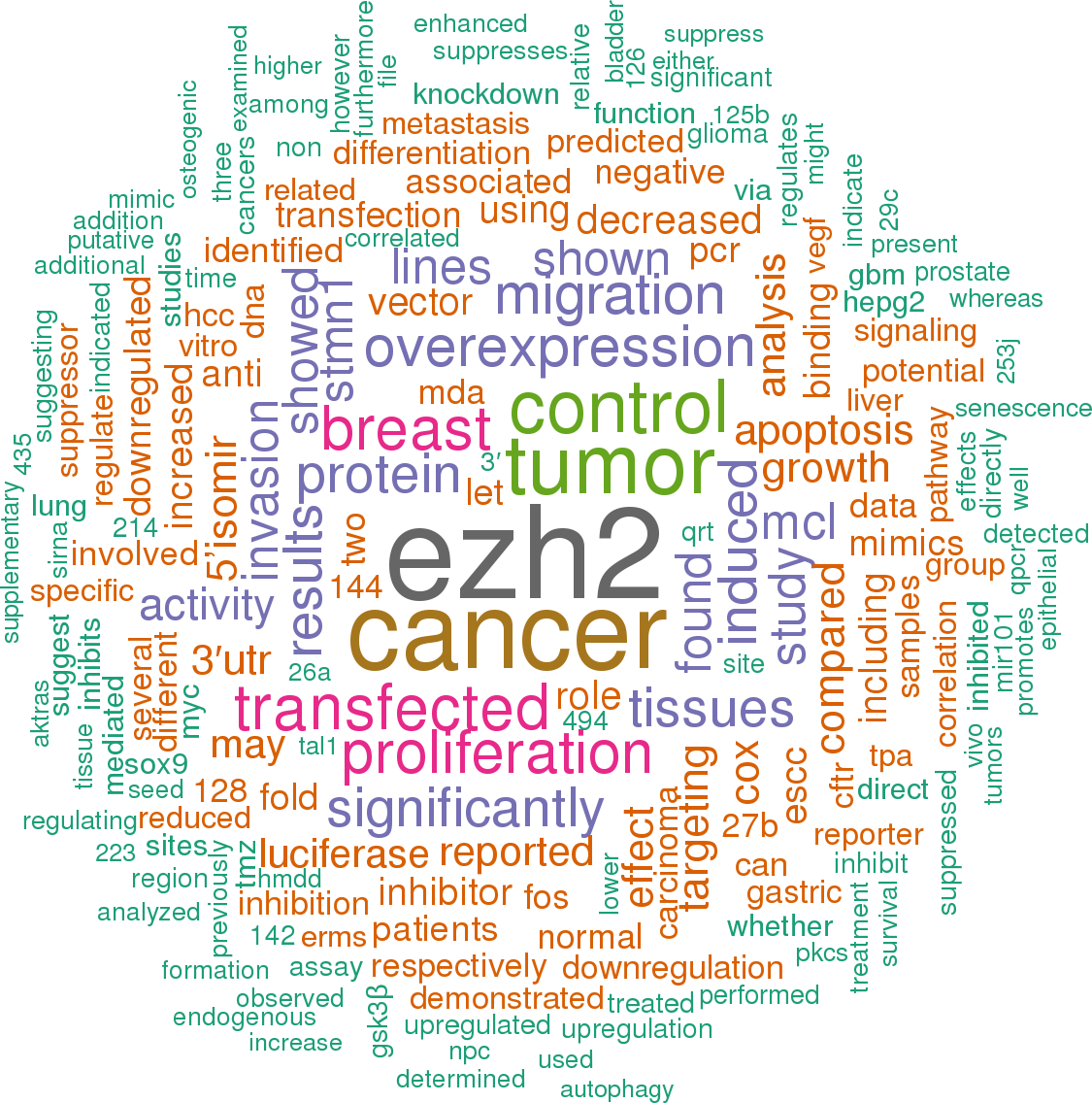Accession
MI0000103
Symbol
HGNC:
MIR101-1
Description
Homo sapiens
hsa-mir-101-1 precursor miRNA mir-101
Gene
family?
family?
RF00253;
mir-101
Summary
Caution, this is an AI generated summary based on literature. This may have errors. ?
MIR101-1 is a microRNA precursor that has been observed to significantly decrease in expression in certain brain regions when comparing long-term and acute responses to ischemic brain injury with immediate brain artery occlusion [PMC7848201]. This miRNA is also a part of the top-ranked miRNA expression signatures, indicating its potential role in the molecular response to ischemic events [PMC9284388]. In relation to immune response, MIR101-1 expression has been correlated with Th2 cell-related genes and is implicated in the regulation of immune cell function [PMC9380889]. Interestingly, MIR101-1 has a target sequence that can be extended by certain genetic variants, suggesting that genetic differences may influence its regulatory potential [PMC3198095]. Despite its regulatory capabilities, MIR101-1 does not target SUV39H2 mRNA according to predictions from TargetScan [PMC3198095]. In comparative studies of miRNA paralogues, MIR101-1 is distinguished from its paralogue MIR101-2 by uniquely aligned read pairs in small RNA-seq datasets, which emphasizes its unique presence and function [PMC6901076]. Moreover, MIR101-1 has been found notably down-regulated in patients with Parkinson's disease (PD), which may suggest a role for this miRNA in neurodegenerative processes [PMC5288660].
Literature search

307 open access papers mention hsa-mir-101-1
(2239 sentences)
(2239 sentences)
Sequence
1180653
reads,
2527
reads per million, 145 experiments
ugcccuggcuCAGUUAUCACAGUGCUGAUGCUgucuauucuaaaggUACAGUACUGUGAUAACUGAAggauggca
((((.....((((((((((((((((((.((((............)))))))))))))))))))))).....))))
((((.....((((((((((((((((((.((((............)))))))))))))))))))))).....))))
Structure
cuggc A gucua
ugcc uCAGUUAUCACAGUGCUG UGCU u
|||| |||||||||||||||||| ||||
acgg AGUCAAUAGUGUCAUGAC AUgg u
uaggA - aaauc
Annotation confidence
High
Do you think this miRNA is real?
Comments
Reference [1] reports two miR-101 precursor hairpin structures in human, on chromosome 1 (MIR:MI0000103) and 9 (MIR:MI0000739, named mir-101-precursor-9 in [1]). The mature sequence shown here represents the most commonly cloned form from large-scale cloning studies [3].
Genome context
chr1: 65058434-65058508 [-]
Clustered miRNAs
1 other miRNA is < 10 kb from hsa-mir-101-1
| Name | Accession | Chromosome | Start | End | Strand | Confidence |
|---|
Disease association
hsa-mir-101-1 is associated with one or more human diseases in the Human microRNA Disease Database
| Disease | Description | Category | PubMed ID |
|---|
Mature hsa-miR-101-5p
| Accession | MIMAT0004513 |
| Description | Homo sapiens hsa-miR-101-5p mature miRNA |
| Sequence | 11 - CAGUUAUCACAGUGCUGAUGCU - 32 |
| Evidence |
experimental
cloned [3-4] |
| Database links |



|
| Predicted targets |



|
Mature hsa-miR-101-3p
| Accession | MIMAT0000099 |
| Description | Homo sapiens hsa-miR-101-3p mature miRNA |
| Sequence | 47 - UACAGUACUGUGAUAACUGAA - 67 |
| Evidence |
experimental
cloned [1-4] |
| Database links |



|
| Predicted targets |



|
References
|



